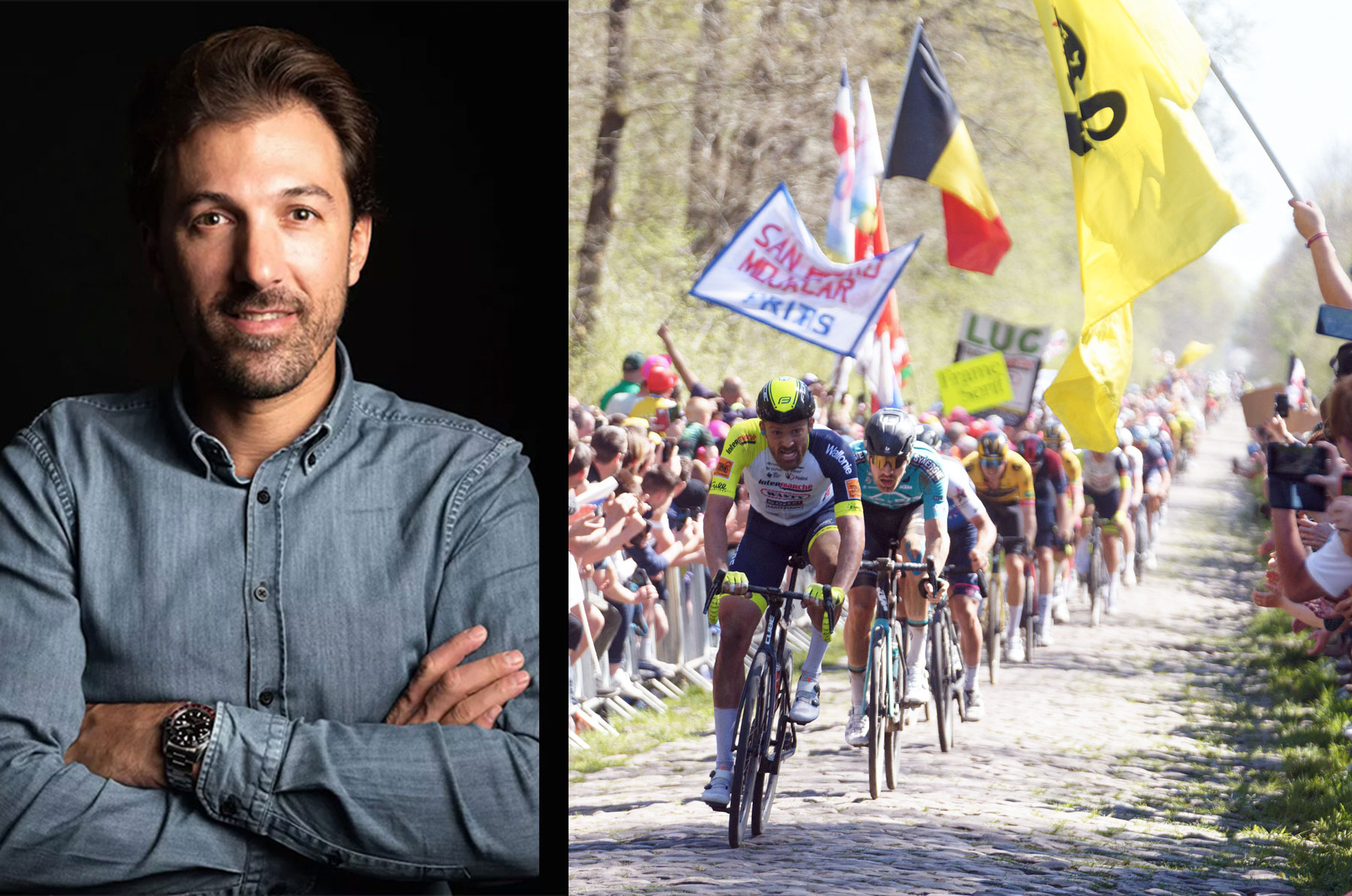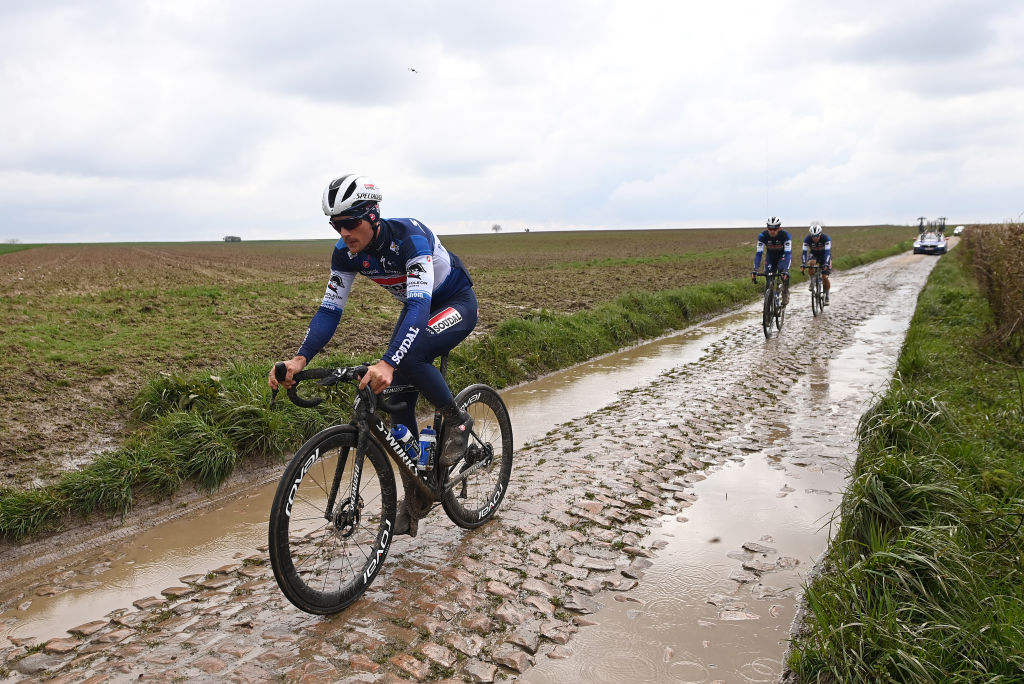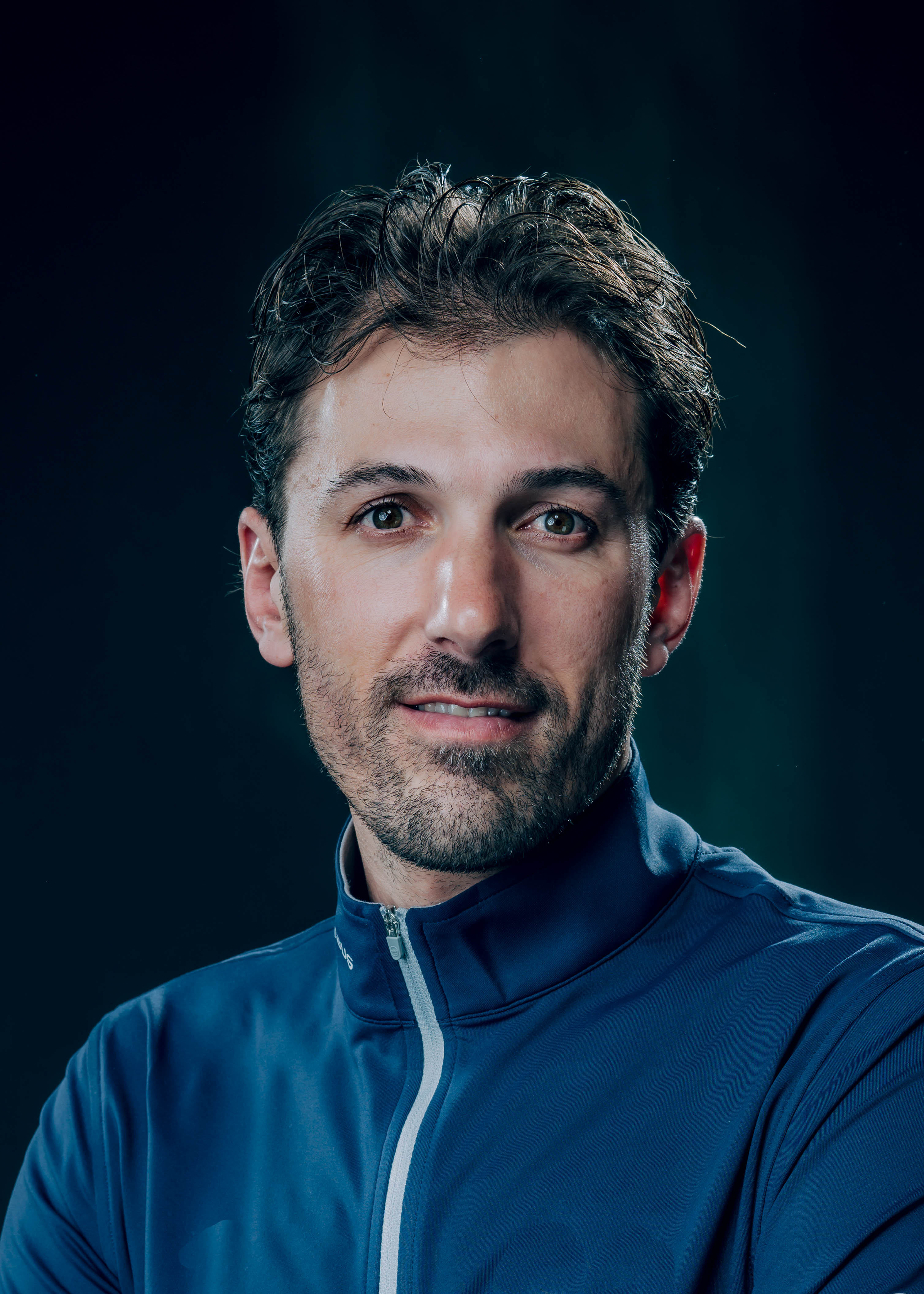Fabian Cancellara’s Paris-Roubaix preview
While the Van Aert-Van der Poel rivalry returns, our Classics columnist keeps an eye on the outsiders

Paris-Roubaix is here, and I'm convinced that this year's men's Hell of the North will be a special race.
I’ve had great races at Paris-Roubaix myself but since I stopped racing in 2016, I’ve never really returned to see the race in person. This year I’ll be watching on television in Switzerland but I really hope one day I’ll return to the race in person, especially with the Tudor Pro Cycling team.
There’s no doubt that Wout van Aert and Mathieu van der Poel come to race as the favourites, and perhaps Van der Poel is the bigger favourite of the two after the Tour of Flanders, but at Paris-Roubaix we can never underestimate other riders.
We have riders from all different teams who can do something on the cobbles. I mean with a guy like Stefan Küng we have a real possibility – this is more his race than Flanders where he finished sixth. And of course, with no hills, the race can be like an individual time trial, which is why a rider like Filippo Ganna has a real chance.
Ganna is similar to me in his time trial strength, but he's another type of rider altogether and he has his own identity. I’m curious to see him race this year.
In the long term, I hope he's going to leave the track and focus 100% on the road. I still have huge respect for everything he achieved on the track, but I think he has to focus more on road racing to prepare for a one-day Classics.
Then you have Jasper Stuyven and the likes of his teammate Mads Pedersen and even Matteo Trentin. All teams have some riders who can do something here, and at Roubaix, we always have crazy surprises. Take Peter Sagan – you never ever know with Peter, we could see him have a super weekend. These are the riders who I definitely say also have possibilities.
Get The Leadout Newsletter
The latest race content, interviews, features, reviews and expert buying guides, direct to your inbox!
I think it's cool to see outsiders win at Roubaix and the race is famous for it. We almost saw this happen with the breakaway group at Flanders, but in the end, the race was completely changed, and so the three best riders emerged up front.
The teams with outsiders have to continue the way they've been racing, taking chances and going for breaks, otherwise, it's just too easy for the two main favourites to win.
Unlike the Flandrian Classics, there are no hills on the plains of northern France, so it may be the case that a big group is going to go clear in the early break or an attack, and this can have a big influence. It’s been interesting to see how teams have been moving early in races, anticipating the finale, and how those breakaways have influenced the race.
People often think of cobbles as a test of strong riders, but I think it's more of a tactical man vs man race on the cobbles. That’s because cobbles are not a fight in the same way as we see on steep climbs. I mean the Oude Kwaremont is a Tadej Pogačar climb where his anaerobic strength can and did make the difference.
Of course, Tadej isn’t racing Paris-Roubaix but with the flat roads and the flat cobbles the race is wide opened, it's about more than just anaerobic strength.
You might get a chance for an attack from the likes of Soudal-QuickStep. They have a lot of riders who are just behind the top three contenders, but they have a strong team collective that can go from far. I think that they are going to be an interesting team to watch this weekend.
Conditions will also be a factor this weekend. I hear it's been raining a lot these last few days and that means that even if it's dry on the day there will be some wet parts on the course. This will have a huge influence in terms of crashes.
Cars and tractors create potholes in the cobbles, which fill with water and then other vehicles and riders splash the water on the road. There's also the Roubaix sportif ride on the previous day with thousands of riders passing through the sectors. These are all factors that I think can have an influence on the road surface on the cobbles.
In 2016 we had a very similar situation. Some sections of the cobbles were suddenly wet or muddy and the change in surface, perhaps at 45km/h sparked crashes and disaster. With mixed surfaces on different sectors of the cobbles, it's going to be more slippery, than if it was 100% dry.
Of course, that's the beauty and fascination of Paris-Roubaix, every year creates a different race. I can't wait to see what happens on Sunday.
The changing face of Paris-Roubaix

I rode my first Roubaix in 2003. Can you imagine the riders being asked to go back to riding on low-profile aluminium wheels? Today, they arrive with aero bikes and 30mm or 32mm tyres.
For those frame sizes, it works to put on balloon tyres so you can ride over the cobbles so smoothly. I mean, it's kind of gravel style, and then you have a nice suspension-style ride.
Then we’re seeing several teams at the race with adjustable tyre pressure systems, so they can take out air for the cobbles and put it back in for the tarmac. But it also means that you could crash out because if you have if you forget what pressure you're at. I think this could be a problem with those systems.
Personally, if I have too much tech on my bike, I just go crazy. I want to focus on the race, I want to focus on my gears, I want to focus on the road and not on too many other things around the bike.
So I always tried to go for simplicity, but maybe that has changed now as we have seen guys already using the 'shock' suspension systems, and I know that already today the tyres are helping quite a lot to have some suspension, especially the 30mm or even 32mm tyres. We rode with 27 or 28mm. I think Johan Museeuw went for 23 or 25mm tyres, so that's already a huge change.
Is there an advantage or disadvantage to new bikes and tyres? It’s just a different decade and different time, and I wouldn’t say one is better than the other. The cobbles have changed, nature has changed, and the equipment has changed. Today it's also about aero, comfort, speed – everything at once.
One great change for the better is to see the women’s race on the previous day, too. It's special to see the women are riding Roubaix, but I mean, they ride in a different way, and it’s a different race on a different course. But it’s nice that cycling had opened up for women.
The races so far this season have been special, and it’s been nice to watch the season unfold. I think that means we can be confident that this is going to be an amazing, special, Paris-Roubaix.
Fabian Cancellara is an ex-professional cyclist who raced from 2001 to 2016 for Mapei, Fassa Bortolo, CSC and Trek. One of a select trio of riders to have won Paris-Roubaix and the Tour of Flanders three times, alongside arch rival Tom Boonen and Johan Museeuw, he is the only racer who can add the Strade Bianche triple to that glittering statistic – first across the line in Siena at four year intervals between 2008 and 2016."Spartacus" was also a formidable time trialist: four times world champion, twice Olympic champion, his final race as a professional cyclist came in the TT at the Rio Olympics in 2016, where he triumphed over second-placed Tom Dumoulin by a staggering 47 seconds. Alongside various business interests – and being a Cyclingnews columnist, of course – Cancellara is a founder of the Tudor Pro Cycling team, currently racing at UCI Pro Team level.
